Last April (2012) at the UK premier of Disneynature's African Cats, Prince William gave a passionate speech on stopping poachers from slaughtering big game animals. Sadly, since then 'The War Against Nature' has raged on with no end of bloodshed in sight.
Fifty years ago there were 200,000 lions living in Africa -- today there's only 15,000 left and their habitat has greatly diminished. It's desperate in some West African countries like Nigeria with only 34 lions left; there are 40 left in Senegal; and Cameroon has less than 110 beasts remaining.
On January 5, 2013, poachers killed 11 elephants in the largest single mass murder on record in Kenya. Ten days later two tons of ivory with a street value of $1.2 million was confiscated on the wharf in Mombasa, Kenya. It was the biggest single seizure of ivory. The ivory, it turns out, originated from Rwanda and Tanzania, the container destined for Indonesia was declared as containing decorative stones.
The plight of the world's rhinos is equally grim. At the beginning of the 20th century there were about 500,000 rhinos across Africa and Asia. By 1970 there were approximately 70,000 and today the population is less than 29,000 creatures.
Before I explain what's driving the rhinos -- if worldwide intervention does not occur -- to extinction; let's examine these beauties of a beast.
Rhinoceros comes from the Greek rhino meaning nose and ceros, which translates to horn. There are two species in Africa: the critically endangered black rhinos whose populations have collapsed 96 percent since 1970 to under 5,000, and the endangered white rhinos -- weighing up to 6,000 pounds with the largest remaining population of about 20,000 critters. In Asia, the endangered greater one-horned rhinos resides in India with less than 3,300 remaining; there are less than 200 critically endangered Sumatran rhinos, and about 45 critically endangered Java rhinos alive.
Rhinos rely upon a keen sense of smell and acute hearing to compensate for nearsightedness. They are clearly intelligent, in fact, even able to paint. They vocalize with a range of sounds from snorting to squeaking; and use their dung as a communication tool.
Half an inch-thick skin is susceptible to sunburn and blood-sucking insects. Rhinos often roll in the mud to protect against high levels of African and Asian ultra-violet radiation. African rhinos have evolved a wonderful symbiotic relationship with oxpeckers or tickbirds known in Swahili as 'Kariwa Kifaru' or rhino guards. These birds eat ticks and flies and other insects from the rhinos skin. They create quite a commotion when sensing danger -- helping alert the nearsighted rhinos.
This powerful, muscular, vegetarian eats grasses, twigs, leaves and buds; rhinos can live in the wild for up to a half-century. Lions and crocodiles prey on the old and sick keeping rhino populations fit.
The rhinos' exquisite horn is a weapon of defense. It also acts as a tool enabling them to dig into the ground and uncover food. Females use it to guide young around. And for males -- size matters -- they use it to attract females.
Researchers from Ohio University discovered that rhino horns are similar in structure to horses' hooves, turtle beaks and cockatoo bills. At the center of each horn there's a dense deposit of calcium giving it strength and a layer of melanin, which protects the core from being degraded by high levels of ultra-violet radiation. The softer core is worn away as rhinos use their horns bashing other animals or rubbing it on the ground. The inner core is constantly being sharpened into a point (like a wooden pencil).
Scientists unanimously agree that there's about as much medicinal value in a rhino horn as there is from chewing on a human fingernail.
Yet, there's an insatiable Asian demand for rhino horns with a black market value of greater than $30,000 a pound; an average horn weighs 15.4 pounds -- its street value is in excess of $462,000.
In South Africa alone the rhino bloodlust is sickening: In 2010, 333 rhinos were slaughtered; in 2011, 448 animals were poached and last year (2012) 668 animals were killed. The stakes are so high that the South African National Defense Fource (SANDF) has been deployed to protect rhinos with moderate success so far.
Crime syndicates are involved in this lucrative and brutal assault on Nature. In South Africa some poachers use high-powered assault rifles from helicopters. Whilst others in groups of three or four including the shooter poach rhinos at night, within five minutes chop off their horns with axes, machetes and even chainsaws, escaping under the cover of darkness. Sometimes it takes days to discover these magnificent butchered creatures, which are often left to bleed to death.
According to TRAFFIC the voracious demand for rhino horns in Asia and in particular in Vietnam have lead to sophisticated criminal networks fueling epidemic poaching. The source that's feeding these rapacious atrocities against rhinos and Nature are status-seeking, nouveau riche that have bought into spurious web-based advertisements claiming that rhino horns "improve concentrations and cure hangovers," "rhino horn is like a luxury car" or "an elixir to cancer."
The demand for rhino horns (which are ground into powder and mixed with alcohol or water) is so high that thefts from European museums have resulted in replacing horns with plastic replicas.
In Kaziranga National Park, India 900 rangers follow shoot-to-kill orders, and use drones and satellites to track rhino-killers. They guard 2,200 endangered greater one-horned rhinos. Since 1985, 108 poachers have been killed but more than 507 rhinos have been massacred (including 18 in 2012) by gunshots, electrocution or spiked pits.
The accelerated rhino slaughter attempting to satisfy a burgeoning demand by affluent Asians must end -- now!
Calling all 196 countries on Earth -- it's time to band together, stop this senseless slaughter and impose stiff 100-year jail terms for anyone involved in trafficking ivory, rhino horns or big cat parts.
We the conscious citizens of Earth are also required to join forces and halt 'The War Against Nature' otherwise by 2030 wild elephants, rhinos and big cats are surely doomed -- extinction means forever.
Please support Stop Rhino Poaching, Save the Rhino, Saving Rhinos and the International Rhino Foundation they are helping to save our majestic rhinos.
Earth Dr. Reese Halter is a broadcaster, distinguished biologist and co-author with Chris Maser of their forthcoming book "Life, The Wonder of it All."
